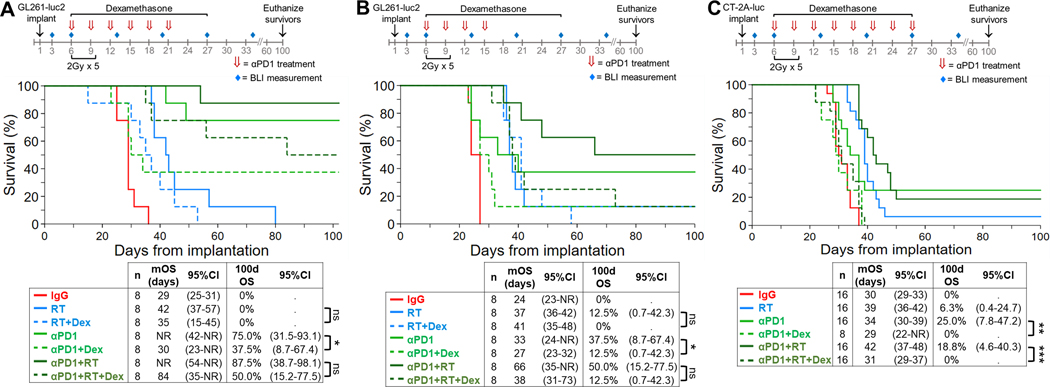Figure 2. Concurrent dexamethasone decreases the OS benefit of anti-PD-1 plus RT in syngeneic GL261-luc2 and CT-2A-luc glioblastoma mouse models.
Kaplan-Meier OS estimates are depicted, with comparison by logrank test and Cox regression. (A) To assess concurrent dexamethasone’s effect on a dose-intensive schedule of anti-PD-1 with or without RT in GL261-luc2 mice (n=8/group from a single experiment), anti-PD-1 was administered IP via a loading dose (500 μg) followed by 5 additional doses (250 μg/dose) at 3-day intervals. RT was administered in 2 Gy fractions/day for 5 days beginning on day 6. Dexamethasone was delivered IP daily from days 6–27 at 10 mg/kg. (B) For GL261-luc2 mice (n=8/group from a single experiment), anti-PD-1 (αPD1) was administered IP via an abbreviated dosing schedule every 3 days beginning on day 6 for a total of 4 doses (250 μg/dose). (C) For CT-2A-luc mice (n=8–16/group, derived from two experiments), anti-PD-1 was administered IP via a loading dose (500 μg) followed by 7 additional doses (250 μg/dose) at 3-day intervals. RT was administered in 2 Gy fractions/day for 5 days beginning on day 6. Dexamethasone was delivered IP daily from days 6–27 at 10 mg/kg.
*p<0.05; **p<0.01; ***p<0.001; Dex, dexamethasone; 95CI, 95% confidence interval; NR, not reached

